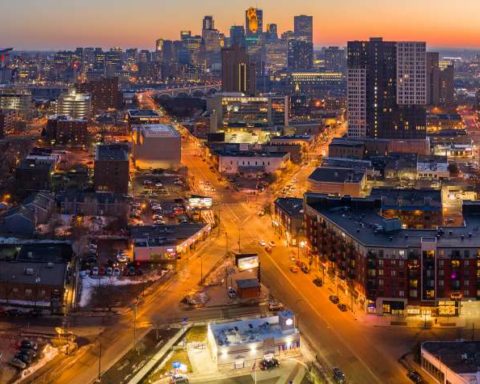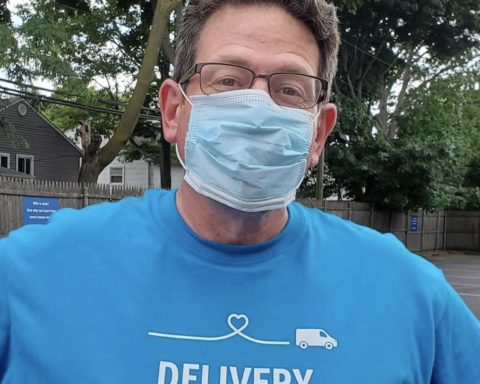LOCATION—Mom! That is what we always say when we are sad, mad and hurt. Moms are the ones who always play with us, comfort us, and love us. We need our moms no matter what. However, to a certain extent, moms can’t always be the patient and understanding one forever. Right? That is how most parents feel during a summer quarantine. The COVID-19 crisis has been very difficult to endure due to quarantine and social distancing orders, but for moms across the U.S., it’s school closures. To parents, school is their savior, which stimulates and keeps their children busy for the day. With school closed, it’s a whole different story! Teaching and studying with their children at home for the rest of the year has been extremely frustrating for most moms. “I am very worried that my children are not receiving sufficient academic instruction. Virtual learning was not adequate enough to make sure that they got through all of the necessary material from school,” says my mom Rebecca Houriani, disappointed.
During the regular school year before the COVID-19 crisis, moms had to endure way more pressure of being an involved parent than dads, who were already occupied with paid work. “Roughly eight-in-ten adults (77%) say women face a lot of pressure to be an involved parent; a significantly smaller share (49%) says the same about men. In contrast, most adults (76%) say men face a lot of pressure to support their family financially, while only 40% say women face this type of pressure,” according to Pew Research Center. This shows that while dads are financially supporting their family, moms are constantly supervising and interacting with their children during the day. According to Census data, there were 15 million single mother-headed households in the U.S. in 2019; 21 percent of children live mainly with a single mother. “Every family experiences a different situation, but I think women in general have a greater share in child care than men,” shares Houriana, mother of three.
As the Pew Research Center Study showed, moms spent an average of 25 hours weekly on paid work while also spending 14 hours weekly on child care, both of which have been tremendously increasing since 1965. Although dads’ time spent on child care is increasing, moms spend more time overall on parenting their children. In the U.S., moms’ involvement in child care has been rapidly increasing in terms of time, but has been booming more than ever since the start of the COVID-19 crisis.
“In years past, my responsibility has been to feed the children and get them to school and their activities during the day. Now, I need to make sure that they are on track academically and teach them valuable lessons in addition to the daily norms,” says Houriana, extremely tired. “For schools, I suggest that class groups be moved outside under tents so that children can receive the opportunity to socialize with their peers. Social interaction is a basic necessity for children. Isolating them at home will have negative effects on their mental health.”
On the other hand, the new and popular Zoom has come to the rescue for all these tired moms. But it’s not over for these hard-working parents. Some dads are at work and camps are closed, which leaves moms on the line taking care of their kids for three months straight! Can you imagine that? This three-month-long summer break isn’t really a break for moms over the U.S. It’s more like a three-month-long arduous prison sentence with no escape and we kids are the guards! I wouldn’t blame any mom who just has a tantrum in public all of a sudden and makes a scene. It’s like back-breaking labor during the Great Depression, but worse and we need to fix that ASAP! Imagine if you were in your mother’s shoes! Would you really enjoy all that time and effort put into three months of exhaustion? Um, no!
It has been extremely difficult for moms to satiate their children’s daily needs. Especially now with summer quarantine, where there aren’t any camps open, as young kids require lots of attention and stimulation. “Normally in the summer, my kids go to camp and are able to wear themselves out by the end of the day. Now, they are still full of energy by the end of the day. And at 10:00 p.m., they’re still jumping around on the bed. We are limited to how many friends we can have over, so this has limited our socializing opportunities,” explains Houraini.
She urgently adds, “I think that the parks and recreation centers should open and allow children of all ages to play outdoors. Some examples are reinstalling the basketball hoops that they had taken down, unlocking gated fields, and sanitizing playgrounds in order to fulfill children’s physical needs.”
“However, during the pandemic things have shifted. There are more men home from work and, from what I have seen, a great deal of fathers have pitched in to assist their wife with child care,” shares Houriani, brightening up after the recognition that she really isn’t alone during this pandemic.
The Reality of Being an Essential Worker
By Skye Hoffman, 11
STUDIO CITY, CA—Before the pandemic, people like delivery workers weren’t considered to have very important jobs. Now, they are “essential workers” and even “heroes” and thanked for their service. I spoke with some of these people to see what it’s like to have such an important job that wasn’t thought to be nearly as important before the pandemic.
“Obviously, I wear a mask when I make deliveries. Our temperature is taken at Amazon. I do wash my hands more often now and I take a shower when I come home from work. We also use alcohol wipes to wipe things like door handles and steering wheels,” says Maurice, an Amazon delivery worker.
When the pandemic started, we were all terrified, and all of the safety precautions like wearing a mask and constantly washing your hands were new. Now, more than three months after the pandemic started, these safety precautions have become second nature to us. The same goes for the essential workers. They have to be extra careful since they are coming in contact with their clients. There are a lot of risks with this kind of job. However, Maurice says that he’s gotten used to it. “I think in the beginning we thought more about [the risks] but now it’s just something that we know about, but it’s in the back of our minds.”
Maurice also told a funny story. He said that before the pandemic, he would train people to be delivery workers by riding along with them and teaching them, but now he has to follow them on the road in his van to train them! He hasn’t really thought about what it means to be called an essential worker. “Usually at Amazon we’re not delivering essential goods, but when the pandemic came, they stopped all non-essential deliveries. Now we deliver mostly water, masks and cleaning supplies. It’s good that we’re able to get things to people so they don’t have to go out.”
Maurice has been an Amazon delivery worker since before the pandemic. However, I also spoke with Stu Stein, who is only a delivery worker for this summer, and he had very different things to say.
“Working for Amazon is a five day a week commitment, 11 hours a day. We’re out of the house from 7 a.m. till 7 p.m. all for the princely sum of $1,000. That works out to 52K a year before taxes if you work year round.” While for Maurice, delivering for Amazon is a normal thing, Stein is spending a summer “in their shoes.”
He thinks that delivery workers are underpaid for their hard work, whereas Maurice seems accustomed to it. These are two very different opinions. It is not just that Amazon workers are underpaid, but also that the owner of Amazon earns a tremendous amount of money in comparison. “Meanwhile Jeff Bezos (our boss) made $13 billion dollars yesterday,” Stein exclaims. Some have speculated that Jeff Bezos will become a trillionaire by 2026.
Delivery workers are not superhumans and they’re clearly not paid as if they are, despite their hard work!







